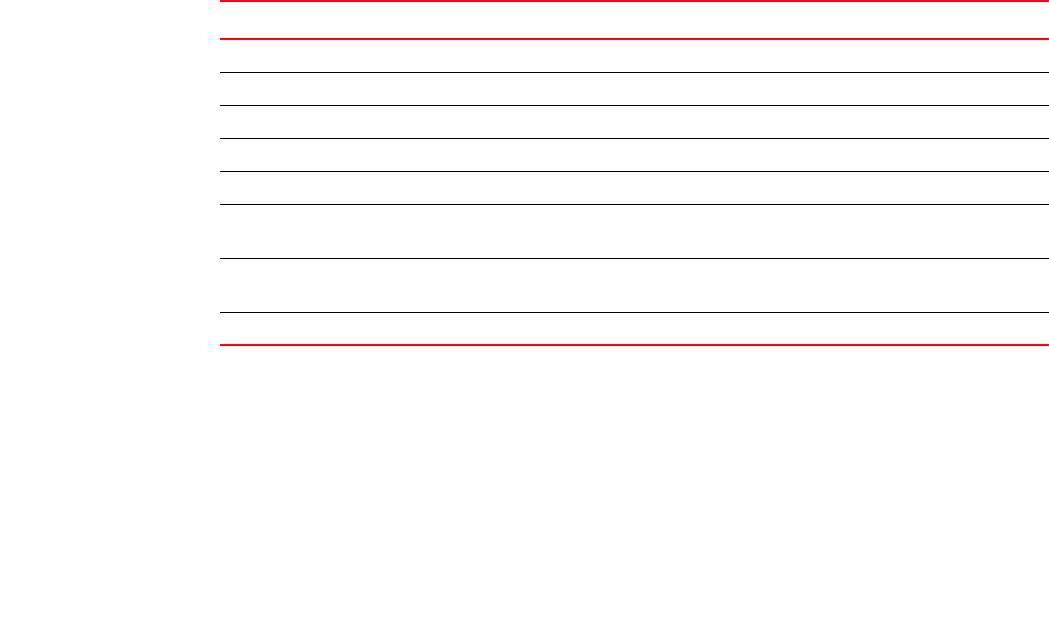Home Theater Server User Manual
Table Of Contents
- Contents
- About This Document
- Network Security
- TCP SYN attacks
- IP TCP syn-proxy
- Granular application of syn-proxy feature
- Syn-def
- No response to non-SYN first packet of a TCP flow
- Prioritizing management traffic
- Peak BP utilization with TRAP
- Transaction Rate Limit (TRL)
- Understanding transaction rate limit
- Configuring transaction rate limit
- Configuring the maximum number of rules
- Saving a TRL configuration
- Transaction rate limit command reference
- Global TRL
- TRL plus security ACL-ID
- security acl-id
- Transaction rate limit hold-down value
- Displaying TRL rules statistics
- Displaying TRL rules in a policy
- Displaying IP address with held down traffic
- Refusing new connections from a specified IP address
- HTTP TRL
- Overview of HTTP TRL
- Configuring HTTP TRL
- Displaying HTTP TRL
- Display all HTTP TRL policies
- Display HTTP TRL policy from index
- Display HTTP TRL policy client
- Display HTTP TRL policy starting from index
- Display HTTP TRL policy matching a regular expression
- Display HTTP TRL policy client index (MP)
- Display HTTP TRL policy client index (BP)
- Display HTTP TRL policy for all client entries (BP)
- Downloading an HTTP TRL policy through TFTP
- HTTP TRL policy commands
- Logging for DoS Attacks
- Maximum connections
- clear statistics dos-attack
- Maximum concurrent connection limit per client
- Firewall load balancing enhancements
- Syn-cookie threshhold trap
- Service port attack protection in hardware
- Traffic segmentation
- DNS attack protection
- Access Control List
- How ServerIron processes ACLs
- Default ACL action
- Types of IP ACLs
- ACL IDs and entries
- ACL entries and the Layer 4 CAM
- Configuring numbered and named ACLs
- Modifying ACLs
- Displaying a list of ACL entries
- Applying an ACLs to interfaces
- ACL logging
- Dropping all fragments that exactly match a flow-based ACL
- Enabling ACL filtering of fragmented packets
- Enabling hardware filtering for packets denied by flow-based ACLs
- Enabling strict TCP or UDP mode for flow-based ACLs
- ACLs and ICMP
- Using ACLs and NAT on the same interface (flow-based ACLs)
- Displaying ACL bindings
- Troubleshooting rule-based ACLs
- IPv6 Access Control Lists
- Network Address Translation
- Syn-Proxy and DoS Protection
- Understanding Syn-Proxy
- Configuring Syn-Proxy
- DDoS protection
- Configuring a security filter
- Configuring a Generic Rule
- Configuring a rule for common attack types
- Configuring a rule for ip-option attack types
- Configuring a rule for icmp-type options
- Configuring a rule for IPv6 ICMP types
- Configuring a rule for IPv6 ext header types
- Binding the filter to an interface
- Clearing DOS attack statistics
- Clearing all DDOS Filter & Attack Counters
- Logging for DoS attacks
- Displaying security filter statistics
- Address-sweep and port-scan logging
- Secure Socket Layer (SSL) Acceleration
- SSL overview
- SSL acceleration on the ServerIron ADX
- Configuring SSL on a ServerIron ADX
- Basic SSL profile configuration
- Advanced SSL profile configuration
- Configuring Real and Virtual Servers for SSL Termination and Proxy Mode
- Configuration Examples for SSL Termination and Proxy Modes
- SSL debug and troubleshooting commands
- Displaying socket information

16 ServerIron ADX Security Guide
53-1002440-03
Transaction Rate Limit (TRL)
1
Syntax: show client-trl <policy-name> { ipv4 | ipv6} <index>
The <policy-name> variable specifies the TRL policy that you want to display rules for.
The show client-trl command displays entries in the TRL policy list, starting from the point specified
with the <index> parameter.
Displaying IP address with held down traffic
To display a list of IPv4 and IPv6 addresses whose traffic has been held down, enter commands
such as the following.
Syntax: rconsole <slotnum> <cpunum>
Syntax: show security holddown
The following table lists the output from the show security holddown command.
Refusing new connections from a specified IP address
Use the security hold-source-ip command to refuse new connections from a specified IP address
for a specified amount of time. This feature applies to all TCP, UDP, and ICMP traffic originating
from the specified IP address.
Syntax: [no] security hold-source-ip <ip-address> <minutes>
TABLE 1 Output from the show security holddown command
Field Description
source Source IPv4 or IPv6 address that is currently being held down
destination TCP, UDP, or ICMP depending on the type of traffic sent by the client.
vers Used by Brocade Technical Support.
attempt Number of connection attempts made by the client during the current monitoring interval.
start Time stamp representing the start of the monitoring interval.
last Time stamp representing the last time the ServerIron received a connection request from
the client.
HD Whether the IP address is currently being held down. Y indicates that the address is being
held down. N indicates that it is not.
time Time remaining for this IP address to be held down, if the HD field contains Y.
ServerIronADX#show client-trl trl-policy1 ipv6 40
Max Count: 2500 Total Count: 2
IP address/Mask interval attempts holddown
--------------- -------- -------- --------
300::3a95/128 1 67 93
300::3a96/128 66 38 34
ServerIronADX# rconsole 2 1
ServerIronADX2/1 #show security holddown
source destination vers attempt start last HD time
192.168.2.30 Any tcp 0 000ab6ae 00000000 Y 9
192.168.2.40 Any tcp 0 000ab6ea 00000000 Y 9










